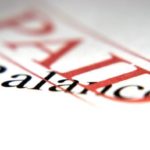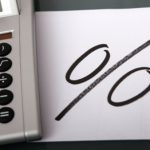The reference points are indispensable in our daily lives, they help us to chart a course to achieve the goal that we set meet; this applies to any field, such as a balanced diet, we know that an adult should consume about 2000 calories per day, accompanied by at least half an hour of exercise. However, this is only one parameter, as a professional tennis player Rafael Nadal, may need to consume more than 3000 calories a day, even stated that Michael Phelps can consume over 10,000 calories/day.
That is why the references, especially those involving measurements are always relative, usually accompanied by the word “depends”.
When to handle our money we are talking about, many would like to have a guide to know if we are doing it right, in fact might suggest that the ideal distribution of our income would be as follows:
- Saving and investment: 20%
- Payment of debt: 20%
- Personal Expenses: 60%
This equation is equivalent to 2000 cal/day when we talk about a balanced diet.
Obviously, in the case of personal finance, there is no exact parameter; it all depends on the situation of each person, which involves income, lifestyle, age, married with children or single, country you are in, inflation, among many others; as in finance, the variables are even greater.
To get an idea, in most countries the cost of gasoline for personal vehicle can represent between 6%-9% of the budget of a person earning minimum wage. On the other hand, if we compare the expenditure on food, the average in developed countries is about 20% of the minimum monthly wage.
How to determine your own equation?
To calculate the percentages, we recommend that you make your calculations annually. That is, in the income you must include bonuses, profits, windfall, tickets cart, etc. Likewise, for the expenses and liabilities (pay monthly installments) you must also consolidate annually.
Certainly, the level of income is crucial in this equation, because as incomes are higher, people are able to devote greater percentage savings and investment. Therefore you must adjust your distribution to your current personal situation. You can guide you through each item with the following:
Savings: This is the most important portion of the equation, it is indispensable, as it is what will allow you to create your personal assets in the long term. In this case, discipline is essential; people who have not acquired this habit may start with a target of 10% of monthly income to set a goal of 20% annually.
Credits: This portion tends to have higher incidence on your family budget, since even though you can leverage yourself to your equity growth, can also make you fall into a vicious cycle of over-indebtedness, if you have no control and responsibility. That is why the maximum recommendation is that the sum of your monthly dues payment for credits, not to exceed 35% of your monthly income.
However, sometimes you can exceed this limit, depending on your situation, provided it is temporarily. For example, a student who works part time bought a car with a bank loan and part with their savings; reflects temporal equation is devoting 62% of the proceeds from his internship to pay the fees of the acquired loan. At first glance, a financial advisor would raise alarms; however, if we expect that this student will graduate in six months, the company has offered a permanent position with good pay and additionally lives with her parents-who can cover the costs of food and housing, if so, we could say that it is a temporary situation and that over-indebtedness was a good financial decision.
The debt is perhaps the most concerning part of your equation, in fact in countries with high inflation, debt can be used as a savings mechanism, provided it is intended for the acquisition of assets.
Costs: The main recommendation is to define your spending habits and rank your priorities. This allows you to avoid unnecessary costs, because it is very easy to incur imbalances, given the high level of discretion that each person possesses in this area.
While this is a reference guide to identify your ideal equation in managing your money, remember that if you can save at least 20% of your income devoted to paying fees for loans by total of 20% and spending 60%, you are in a healthy financial situation with some degree of financial freedom. The challenge is to make it sustainable over time.
We hope that you identify your ideal equation. Remember that the main goal should always be focused on improving your quality of life and to meet your personal goals gradually.








